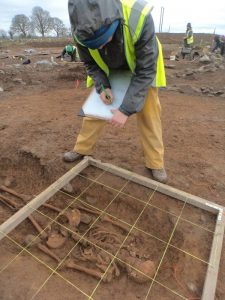Excavations of the ringfort at Ranelagh, near Roscommon, Ireland, undertaken as a road construction project, unearthed the remains of almost 800 people dated to Medieval times.

The site was discovered thanks to use of geophysical measurements prior to the construction. There was no previous record of any habitation on the site, but the geophys results produced significant archaeological features. Excavations confirmed that there was a settlement that was probably occupied between the sixth and 11th centuries. During the excavations remains of 793 people were found, about three quarters of them were intact and the others were disarticulated. Archaeologists managed to determine that several of the 470 juveniles and infants whose remains were unearthed may have been placed there during the later use of the site as a children’s burial ground. Radiocarbon dating results are awaited to determine how many burials relate to the period the site was in active use and how many were buried in later times.

From archaeological record it is now clear that the earliest ringfort enclosure at the site was about 40m in diameter. As there was no surface evidence for it the experts believe that it might have been levelled over centuries of ploughing for agriculture, or cleared during the landscaping of an area of parkland for the nearby Ranelagh House in the early 1700s. The amount of unfinished jewellery pieces found by the archaeologists indicates they were being made in a workshop at the site, possibly for trade. The jewellery items and fragments found, some of them associated with the burials, include amber and jet beads, a lignite bracelet and a brooch panel with enamel stud. A fragment of a copper alloy bracelet has been dated by its decoration to around 350 to 550 AD.

(after Transport Infrastructure Ireland & Irish Archaeological Consultancy)